Knee joint arthrosis combines two processes: cartilage destruction and growth of osteophytes or bone spurs.The process level is determined by radiography.It is believed that arthrosis is the destruction of knee joints with age, the natural process of aging.The cause is muscle weakness and poor blood supply to the tissue.How to treat yourself without surgery?Eliminates factors that reduce muscle tone.
Cause
The cause of arthrosis has not yet been determined by the drug,Only risk factors are named:Over 45 years old, knee injuries and overweight.Almost 50% of adult population has complained about knee joints.
With arthrosis, the cartilage that coating the bone is abrasion or completely absent.Damaged tissue is not a source of pain, as it has no receptors.Inflammation in nearby structures causes characteristic symptoms.
The body continues to regenerate damaged tissues, but the cartilage grows unevenly.As a result, distortions are formed that injure other elements of the joints.The nature of osteophytes is explained by compensation for smooth joint cartilage.Another version shows that the growth of "spurs"It is associated with an attempt to stabilize the joints medically or later as a result of muscle weakness.
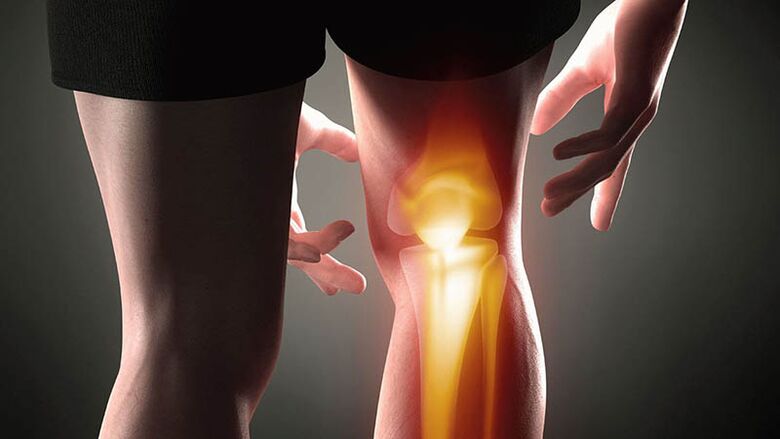
What is the chronic arthrosis of the knee joint?Pain occurs in the tendons and ligaments only when the muscle power stops holding the bone and controls it.Therefore, the causes of biomechanical pain and arthrosis are distinguished:
- Against the background of a long chairThere is a compression between the inguinal ligaments and the layered muscles of the femoral and nervous artery, which weakens the strength of the thighs and leads to the appearance of tension in the knee cup tendons.
- Long sitting squeeze gluteal musclesWeaken them.Instead, pear -shaped muscles begin to function, where the sciatic nerves pass.During its compression, the two -skinned muscles are weakening, the angle of the thigh and the lower leg change change.The knees are injured.
- Heeled runningIt causes calf muscle tension, presents pelvis, weakens average gluteal muscle.Femoral bones turn in, ligaments load along the inside of the knee, medial meniscus, osteophytes grow.
- Flat feetRelated to wearing uncomfortable shoes, weakening of leading muscles and increased lordosis, presenting tibial bones, leading to knee pain due to biomechanical infringement, the development of baker cyst.
The pathological chain that affects the knee is associated with the fall of the tailbone in children, scoliosis caused by internal organ disease.People with different shoulder heights,Over time they began to complain to the knees, because the fascial chain on the front of the body includes the extensor of this joint - the rectal muscle of the thigh.
Symptom
The degenerative process interferes with the function of the joints, leading to pain and stiffness.Trusted that it isFrom the cartilage and bone, the effect on the muscles begins.The practice shows the opposite -Pain in the knee joint occurs in a tendon area- Muscle fasteners - Extensor, flexors and knee stabilizers.
The main signs of the threat of wearing cartilage:
- From time to time, the discomfort associated with walking, the sensation "does not set the feet."
- The appearance of pain with direct load on the joints and muscles, bends and extends it - squat, climbing the stairs.
- Knee pain and stiffness after acting or resting, for example, when out of bed in the morning, which is associated with venous blood stagnation.
The main signs of arthrosis are caused by a burden on weak muscle:
- The knees in the knee are related to the fact that the gluteal and two heads of the thighs are not functioning, and the rectus thigh muscles are stretched, causing discomfort in the knee.
- Pain when bending the joints is associated with the weakness of the flexors - the two -headed muscles and the tendon quadriceps tension.
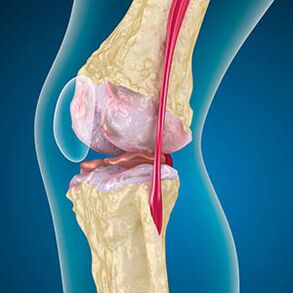
Swelling is caused by injuries to soft tissue, tendon inflammation and joint bags.The appearance of heat in the knee, swelling shows the accumulation of exudate inflammation -Arthrosis is often accompanied by bursitis, synovit, tendinitis.
Lack of knees is painless and traumatic.Clinkles and other sounds do not say that bones are abrasion.Signs -Knee stability violations -Disadvantages of one muscle control.
Creeding caused by bone friction on the bone does not occur at the beginning and end of the amplitude of movement, but in the middle,Even with the passive relaxation of the joints.The blockage of the joints is caused by wearing cartilage and tendons, which produces a feeling of fixation.Bones with any movement are controlled by the muscles.Their reductions will soon lead to the direction of the changing bone movement, blocking it.
1 degree
Determination of arthrosis levels occurred by x -Rayreveal participation in the pathological process of bone structure.Their changes indicate that the muscle system has undergone an imbalance for 5-10 years.As a rule, peopleFor years -years they suffer from illness.
In the first stage of arthrosis, which is detected by accident, a slight increase in bone bone occurs.Growth appears in places of the largest instability of the joints.Usually, patients rarely experience pain or discomfort during movement.
The weakness of some muscles is compensated by the function of others, without causing severe cramps and loads.Heavy runs and exercises cause symptoms, as weak muscles are loaded.Weaknesses (hypotension) of the muscles are associated with affected blood supply and conservation.
2 degrees
The second stage of arthrosis is considered simple.Radiography reveals significant bone spurs, but the cartilage is not affected.The amount of synovial fluid is reduced, but symptoms of pain arise after walking and walking, stiffness in the joints and pain when bending and in the knee position.
Features -Early X -Rays Second Stage of Knee Arthrosis:
- Sharp edges of tubercles between the tibia, where the cross -shaped ligaments are attached;
- narrowing the joint gap next to the medial side;
- Sharp edges of the bone - the bone back on the medial side, less frequently on the side - depending on the development of valgus or variable joint deformation.
For the second stage in LarsenThe joint narrowing of the gap with more than 50% is a feature, but this can only be checked in dynamic or comparison with joints that are not like.
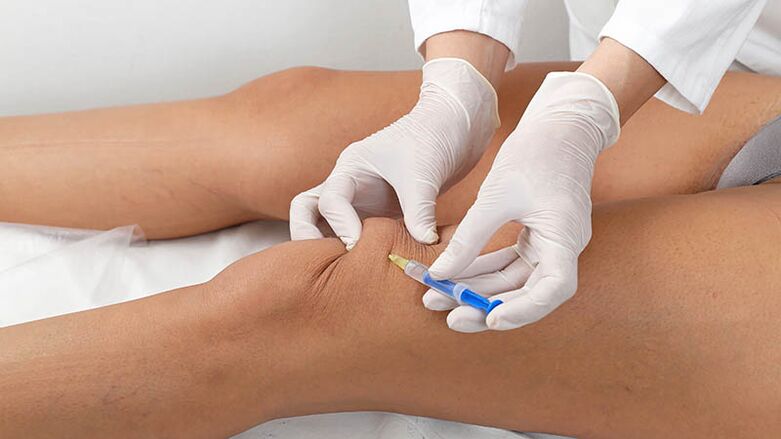
3 degrees
In the third stage of arthrosisPain during flexibility and extension of the joints becomes constant.During severity, joint breaking and swelling, pain does not stop resting.Around the knee, swelling appears, a significant deformation of the joints.
Signs -Moderate arthrosis of the knee joint in the third stage:
- The joint gap is very narrow;
- presence of subcondral sclerosis in the loaded section;
- many osteophytes on the edge;
- the rare appearance of subcondral cysts;
- Synovites, the appearance of baker cyst below the knee;
- uneven surface of the femoral and tibia, loss of joints;
- changes in patella form;
- Foci calcification and chondromation;
Rarely the fourth stage is equipped with necrotic wounds.Why is arthrosis dangerous?The disease violates the ability to move, creating dependence on others.
Diagnostics
Orthopedic studies of edema signs, penetrating joints for pain, studying a variety of active and passive movements.Necessarily check the lumbar spine, becauseThere the nerves pass, which provides the function of the thigh muscles.
Radiography shows the presence of osteophytes, a change in the space between the femoral and tibia bones, which indicates the loss of cartilage in the knee.Occasionally x -Ray knee joints show important signs of cartilage, but patients do not experience significant pain.On the other hand, the first stage arthrosis can interfere with the knee function, because the cause of pain is hypotonic muscles.
If X -Ray shows no major changes, thenThe doctor prescribes the knee and lumbar joints.Diagnostics describe ligaments, tendons and muscles, meniscus to find other sources of pain.
Laboratory diagnostics are requiredIf you suspect infectious damage to the joints or gout.
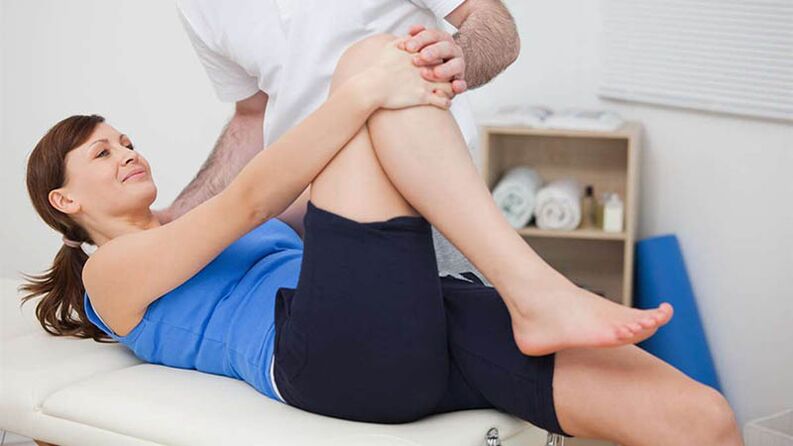
Treatment
Arthrosis therapy should be comprehensiveaimed at causing the disease.With endocrine dysfunction that can affect connective tissue, appropriate treatment is performed.Excess weight patients are recommendedGo to the right nutrition.Exacerbations are released with medicines.
Drug
The treatment of painkillers is made up ofPrescription of anti -inflammation drugs.Anti -Anti -Sseroid drugs with prolonged useNegatively affects stomach function.
The treatment regimen includes chondroprotectors, which only helps while taking a long course3-6 months.Pharmacies represent a large number of drugs.
It is believed that these drug components help to regenerate the cartilage structure, have an analgesic effect.
A controlled study was carried out by little, and they are concerned about complex treatment - arthroplasty, physiotherapy, diet.
Attention!Chondroprotectors are drunk in the course - you can take one course of one drug, and the second course - another, and compare the effects.However, uncontrolled drugs are not the best idea.Before you start taking the drug, consult your doctor.
How and what can relieve pain and swelling?Intra -Articular Injection is more popular:
- SteroidPrevents inflammatory reactions at the immune cell level, eliminates acute pain, joints and swelling.
- Hyaluronic acidIncreases the viscosity of the joint fluid, reducing the articular surface friction.
IMPORTANT!The effects of the drug have been enough for 6-12 months, but at the same time the degenerative process does not stop.
Surgical
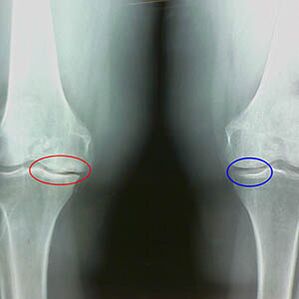
With low drug effectiveness, patients offer arthroscopy- minimal invasive procedures for removal of bone growth, joint audit.If necessary, the surgeon runs ligaments and cartilage plastic, remove the focus of the cloth.
Bone osteotomy aims to change the load axis of the joints.The doctor cuts the femoral or beret to change the surface area together.This operation is often performed in young patients.
Total replacement of knee joint or arthroplastyIt is required in severe levels of arthrosis (third or fourth degree).Surgical treatment does not always solve the problem, as it requires diligent and daily recovery, muscle strengthening.
Knee changes can be compensated in relation to the pelvis, so without the recovery of muscle balance, the hip joint suffers next.
Physiotherapy treatment
In the physiotherapy environment, mud applications, phonophyes and magnetic therapy are used.External factor actions are aimed atStimulation of blood supply and tissue regeneration, inflammation and swelling.
Treatment with folk and non -traditional methods
Recipes of folk medicine for the treatment of knee joint arthrosis at home usuallyaimed at getting rid of swelling and eliminating pain.Often, carrot leaves and fried potatoes are used, sometimes mixed and vodka to compress.
It is impossible to completely stop the deterioration.You can affect the change in the kidneys using celery juice.The kidneys are associated with the iliac-luxury muscle, which is associated with the pathology of the hip joint.Normalization of gall bladder and liver improves knee condition.
Methods of treating the early stages of the early stages of knee arthrosis include anti -herbal decoctions:Chamomile, Wort St.John, eternity.Land waste, sea salt and kerosene are used.Bath with magnesium salt, pine infusion is used.
Therapy and manual massage
Manual therapy for osteoarthrosis of the knee joint help, if an expert understands a single imbalance.Muscle tests help find weak muscles that stabilize the knee, determine the cause of dysfunction and eliminate them.
The source is not just a joint block in the lumbar region,but also dysfunction at the level of blood supply, internal organs, endocrine and biochemical failure.Therefore, manual therapists must have osteopathic skills, a kinesiology used to influence many factors.
Massage is an additional tool for manual therapy, yourself.Patients with knee joint arthrosis can independently knead muscle tendons that control the movement of the limbs:
- areas around large gluteal muscles;
- line on the front surface of the thigh - from the pelvis to the patella;
- The surface of the thighs from large swing to thigh condyles;
- The thigh area along the inguinal ligaments;
- The inner surface of the thigh (along the main channel line).
Massage is done in place, without pressing much.
Therapeutic gymnastics
Causes of arthrosis are muscle weakness caused by problems in the lower back, basin, abdominal cavity.Performing exercises for the prevention of arthritis and knee joint arthrosis for the elderlyIt is possible to increase strength, but not a tone.
Without work on their weaknesses with the help of manual therapy, it is difficult to achieve complete biomechanical recovery.Yoga continues to prevent stability joints.Among the methods of treatment, it is best to preferPilates and Scandinavia are running.
Diet
Food is adjusted, first of all, to fight overweight.Important to leave sugar and moderate carbohydrates, adding products with fiber, magnesium, vitamin B and calcium with knee joint arthrosis, which is important for muscle activity.TryExcludes dairy products, because almost 80% of the population has lactose intolerance.
Prevention of arthrosis of the knee joint
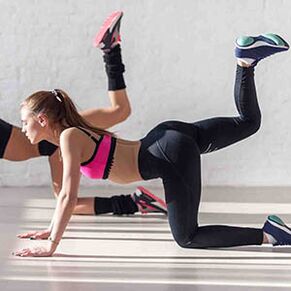
Attempts to strengthen the muscles do not always help, because conservation and blood supply are not restored.The function of the hip muscle depends on the lumbar plexus.
Changes in the lower parts related to the weakness of the abdominal muscles also affect the knees.Therefore, in men with "beer stomach", arthrosis is more common, as in women after multiple guaks, some genera with diastasis - muscle weakness - abdominal wall.
Operations in the pelvis and internal organs form an adhesion that affects the lumbar region vertebra, violating muscle preservation around the knee.
Which doctor to contact with knee joint arthrosis?Diagnosis will help make orthopedisThat will demand the operation.The best results are provided by the work of the multidisciplinary team at the rehabilitation center.
The best that can be done for joints:Eat properly, monitor weight, walk more, visit a massage therapist or osteopath once every three months.
Reviews about treatment
Positive reviews can only provide comprehensive treatment to change knee joint arthrosis or gonarthrosis.Anesthesia, intra -articular injection acts temporarily, suppressing natural inflammation reactions.
Conclusion
The problem of arthrosis is that drug therapy temporarily eliminates only pain syndrome.The reason is left without the introduction and influence.Ergotherapists who teach how to live with knee joint arthrosis can help and how to use sticks properly.But this service is only available in private clinics that carry out recovery.























